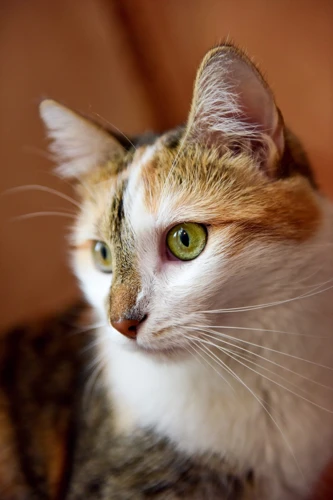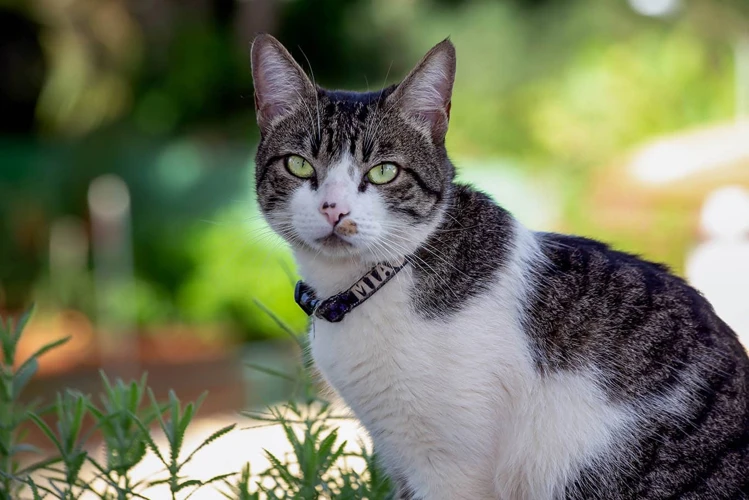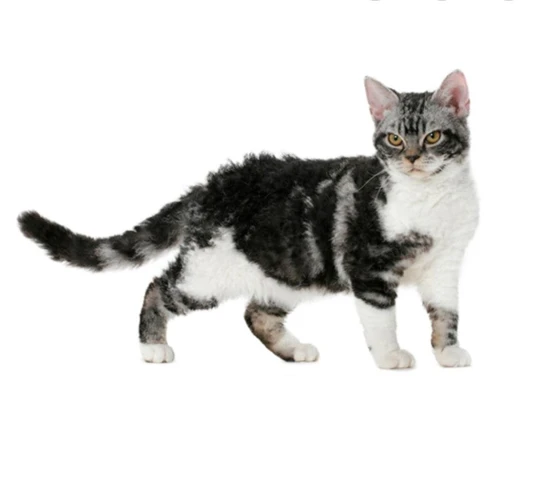As a cat owner, dealing with aggressive behavior from your American Wirehair can be a confusing and intimidating experience. You may be left feeling helpless and wondering where to even start when it comes to training your furry friend. Thankfully, there are effective methods for dealing with aggression in American Wirehairs, and this comprehensive guide will walk you through these methods step-by-step. From understanding the types and causes of aggression to implementing proper training and prevention techniques, this article provides the knowledge and tools necessary for a happy and harmonious relationship with your pet. So, let’s dive in and learn how to handle aggressive behavior in American Wirehairs.
Understanding Aggressive Behavior in American Wirehairs

Understanding the underlying reasons for aggressive behavior in American Wirehairs is crucial for developing effective training strategies that promote positive change in your pet’s behavior. Aggression can be caused by various factors ranging from genetic disposition, poor socialization, specific phobias, or underlying medical conditions. In this section, we will explore the different types of aggression in American Wirehairs and their possible causes to help you better understand your pet’s behavior. By identifying the reasons behind aggression, you will be better equipped to take the necessary steps to train your American Wirehair and prevent future aggressive behavior.
Types of Aggression in American Wirehairs
Dealing with an aggressive American Wirehair can be challenging, especially if you don’t understand the different types of aggression that can manifest in your feline friend. Recognizing the signs of aggression is the first step toward addressing it. Here are some of the most common types of aggression in American Wirehairs:
- Play aggression: This type of aggression is most common in kittens but can persist in adult American Wirehairs too. Play aggression is when a cat bites, scratches, or attacks their owner as a form of play. To minimize this behavior, provide your cat with plenty of toys to redirect their energy.
- Fear-induced aggression: If your American Wirehair feels threatened or uncomfortable in a situation, they may respond with aggression. This kind of aggression can be dangerous and should be taken seriously. Common triggers for fear aggression include unfamiliar animals or people and loud noises. One way to prevent fear-induced aggression is to socialize your cat from an early age. You can also try to identify the triggers that cause your cat to feel fearful and avoid them if possible.
- Redirected aggression: This occurs when your American Wirehair is agitated by one stimulus but ends up attacking another entity. For example, if your cat sees another animal outside but can’t get to it, they may take out their frustration on another pet or a person in the household. Redirected aggression can be challenging to predict and control, so it’s important to allow your cat a safe space to calm down if they seem agitated.
- Defensive aggression: If an American Wirehair feels trapped or cornered, they may become defensive and lunge or scratch in an attempt to escape. This type of aggression is typical when a cat is in a new environment, around unfamiliar people, or during vet visits when they feel threatened. To prevent defensive aggression, provide your cat with regular access to safe spaces where they can retreat if they feel threatened. You can also try to desensitize your cat to stressful situations by exposing them to them in a controlled setting.
- Territorial aggression: American Wirehairs are territorial by nature, and if they feel that their personal space is being invaded, they may become aggressive. This kind of aggression is common around food bowls, litter boxes, or other areas that your cat considers their own territory. To minimize territorial aggression, make sure each cat has their litter box, food, and water bowl, and bed. By doing this, you can prevent resource guarding behavior.
Understanding the different types of aggression that your American Wirehair may exhibit is the first step towards addressing the problem. However, using appropriate training methods is equally important to reduce aggressive behavior. In the following sections, we’ll discuss some effective techniques for training your American Wirehair to control their aggressive behavior.
Causes of Aggressive Behavior in American Wirehairs
Aggressive behavior in American Wirehairs is a common problem that can be caused by a variety of factors. Understanding the underlying causes is essential for developing an effective training plan and preventing the behavior from escalating. The table below outlines some of the common causes of aggressive behavior in American Wirehairs.
| Cause | Explanation |
|---|---|
| Pain or Discomfort | If your American Wirehair is in pain or discomfort, they may become aggressive as a way to protect themselves. This can be caused by a medical condition, injury, or even a dirty litter box. Check for any physical issues and keep their litter box clean to prevent this from happening. |
| Fear or Anxiety | American Wirehairs can become aggressive when they feel threatened or afraid. This may be due to a past traumatic experience, lack of socialization, or exposure to new or stressful situations. It’s important to socialize your American Wirehair and to introduce them to new people and environments gradually. |
| Territoriality | Some American Wirehairs can be possessive of their space or belongings and may become aggressive if they feel like their territory is being invaded. This can include their food, toys, or even their favorite sleeping spot. Teaching your American Wirehair obedience and creating boundaries can help with territorial aggression. |
| Redirected Aggression | When your American Wirehair is aroused by something, they may direct their aggression towards the nearest person or pet, even if they aren’t the cause of the arousal. This can be caused by outside factors, such as a loud noise, or an interaction with another pet. To prevent this, it’s important to supervise your pets and to intervene if necessary. |
As you can see, there are a variety of causes of aggressive behavior in American Wirehairs. By identifying the underlying cause of the behavior, you can address it before it becomes a serious problem. For example, if your American Wirehair is aggressive due to a dirty litter box, make sure to clean it regularly and provide alternative litter boxes around your home. If they are aggressive due to a lack of socialization, consider seeking professional training or following tips on socializing your American Wirehair. By addressing the underlying cause of aggression, you can keep your pet and your family safe and happy.
Training Methods for Dealing with Aggression

Dealing with aggressive behavior in American Wirehairs can be a challenging task for any pet owner. It is essential to understand the reasons behind the behavior and the methods that can be used to correct it. Using training methods can help to modify aggressive behavior, making these furry creatures more amiable and manageable pets. There are several effective training methods you can use to deal with aggressive behavior in your American Wirehair, including socialization, positive reinforcement, desensitization and counterconditioning, redirecting attention, and clicker training. These methods can improve your American Wirehair’s behavior and make life much easier for you and your furry companion.
Socialization
Socialization is the process of exposing your American Wirehair to different stimuli in a safe and controlled environment to reduce the likelihood of aggressive behavior towards new experiences. Proper socialization should begin from an early age (between 3 to 14 weeks) and continue throughout their life. Here are some tips for socializing your American Wirehair:
- Introduce your American Wirehair to a variety of people, pets, and environments to help them become comfortable with new experiences.
- Use positive reinforcement to reward good behavior and avoid using punishment to correct bad behavior.
- Expose your American Wirehair to different textures and surfaces, such as hardwood floors or tile, to help them become comfortable on various surfaces.
- Allow your American Wirehair to experience different sounds, such as doorbells, vacuum cleaners, and fireworks, to help them become desensitized to loud noises that may trigger aggression.
- Take your American Wirehair to different places, such as parks, pet stores, or other areas with high traffic, to help them become used to crowds and strangers.
By ensuring that your American Wirehair is socialized in a positive and safe environment, you can reduce the likelihood of aggressive behavior towards new experiences, people, and animals. This will make things easier for both you and your furry friend, making it easier for you to train them to use the litter box, prevent them from scratching your furniture, teach them to come when called, and improve their overall obedience and behavior.
Positive Reinforcement
Positive reinforcement is an effective method for dealing with aggressive behavior in American Wirehairs. One of the most important aspects of this training technique is using rewards to encourage good behavior and discourage bad behavior. This method is based on the idea that animals will repeat behaviors that are followed by a positive consequence and avoid behaviors that are followed by a negative consequence.
To use positive reinforcement effectively, you need to choose rewards that are highly motivating to your American Wirehair. These could be treats, toys, or praise. Make sure the reward is given immediately after the desired behavior, so your cat can make the connection between the behavior and the reward.
The following table shows examples of positive reinforcement for different types of aggressive behavior:
| Type of Aggression | Positive Reinforcement |
|:——————-|:———————–|
| Territorial | Reward your cat for staying calm and relaxed in the presence of other animals or people. Treats and petting work well here. |
| Fear-based | Reward your cat for approaching and interacting with the object or person he is afraid of. This will help him learn that the object or person is not a threat. Treats and praise are good rewards for this type of behavior. |
| Play aggression | Reward your cat for playing calmly and gently. Give him a toy or a treat when he plays without biting or scratching. |
| Redirected aggression | Reward your cat for looking away from the trigger and engaging in a calm activity such as playing or grooming. Treats or a favorite toy are good rewards here. |
Remember that positive reinforcement works best when it is consistent and immediate. Make sure to reward good behavior every time you see it, and avoid rewarding bad behavior. Consistency is key to helping your American Wirehair understand what you expect of him.
If you are new to positive reinforcement training, it can be helpful to enroll in a training class or work with a professional trainer. They can teach you the basics of training and help you choose the right rewards for your cat’s personality and behavior.
For more information on teaching obedience to your American Wirehair through positive reinforcement, check out our article on teaching wirehair obedience.
Desensitization and Counterconditioning
Desensitization is a method used to help an American Wirehair get over their aggression by gradually introducing them to the stimuli that cause their aggressive behavior. It is an effective way to reduce the intensity of a reaction to a particular trigger, so the cat can eventually learn to tolerate it.
To start with, identify what triggers the aggression in your cat. This could be anything from a specific person or animal to a particular noise or object. Once you have identified the trigger, begin by exposing your cat to it at a distance or in a controlled environment, giving the cat plenty of space and time to react.
Here are some steps to follow for desensitization and counterconditioning:
- Start with a low-intensity version of the trigger. For example, if your cat is aggressive towards other cats outside, start with showing him a photo of cats or a video with the sound of cats meowing from a safe distance. A recording of other cats meowing is an excellent way to introduce the sound without causing any harm.
- Gradually increase the intensity. As your American Wirehair becomes more comfortable with the low-intensity trigger, increase the intensity by bringing the cats closer or playing a video with a higher volume. The goal is to expose your cat to the trigger in a variety of ways gradually.
- Create a positive association with the trigger. Teach your cat that good things happen when the trigger is present. For example, you can offer treats or toys every time your cat sees the trigger, so he starts associating it with positive experience rather than negative ones.
This technique may take time and requires patience, but it can be a very effective way to remove aggression from your American Wirehair’s life. With a consistent approach, counterconditioning and desensitization can help train your cat to behave positively in situations that might have previously triggered aggression.
Redirecting Attention
Redirecting attention is another proven method for managing and reducing aggressive behavior in American Wirehairs. This method involves redirecting the cat’s attention to something positive and non-threatening when they begin to show signs of aggression. It can be especially effective when used in conjunction with positive reinforcement techniques. Here are some practical steps for implementing this method:
| Step | Description |
|---|---|
| 1 | Identify your cat’s triggers – what tends to set off their aggressive behavior? |
| 2 | Prepare positive distractions in the form of toys or treats that your cat enjoys. |
| 3 | When your cat begins to exhibit aggressive behavior, redirect their attention to the positive distractions. |
| 4 | Use positive reinforcement techniques to reward your cat for engaging with the distractions instead of exhibiting aggressive behavior. This could be in the form of verbal praise or treats. |
| 5 | Repeat this process consistently, gradually increasing the duration and intensity of the positive distractions, until your cat learns to associate them with positive reinforcement and begins to exhibit less aggressive behavior overall. |
Remember, it’s important to remain patient and consistent when using this method. Redirecting your pet’s attention will not work overnight, but with perseverance, you should see results. By following the steps outlined above, you can help your American Wirehair to learn new, positive behaviors and ultimately have a happier, less aggressive disposition.
Clicker Training
Clicker training can be a highly effective method for dealing with aggressive behavior in American Wirehairs. It involves using a small device that makes a distinct clicking sound to signal to your pet that they have done something correctly, and will be receiving a reward.
Here are some key steps to implement clicker training to tackle aggressive behavior in your American Wirehair:
- Start by teaching your pet to associate the sound of the clicker with a reward. This can be accomplished by clicking the device and immediately offering your pet a treat. Repeat this process several times until your pet recognizes that the sound of the clicker indicates they have done something right.
- Next, you can begin using the clicker to reinforce positive behaviors and obedience. For example, if your pet is prone to aggressive behavior towards strangers, you can use the clicker to reward them for remaining calm and friendly when someone new enters the room.
- When your pet begins exhibiting aggressive behavior, you can use the clicker to interrupt them and redirect their attention. As soon as you notice the behavior, make a loud clicking noise with the device, which will startle your pet and get their attention. Once they are looking at you, offer a command to perform a positive behavior, like “sit” or “stay”.
- Finally, be sure to always follow up with a reward when your pet successfully demonstrates the desired behavior. This could be a treat, a belly rub, or any other reward that your pet enjoys. Over time, your pet will begin associating the clicker with positive behavior and will be more likely to respond positively to your training efforts.
Remember, clicker training can be a highly effective tool for addressing aggression in American Wirehairs, but it requires consistency and patience. With time and diligent training, you can help your pet overcome their aggressive tendencies and build a stronger bond between you and your furry friend.
Preventing Aggressive Behavior in American Wirehairs

As a responsible pet owner, it is important to take active steps in preventing aggressive behavior in your American Wirehair. Prevention is key when it comes to avoiding any harmful or destructive behavior, and this includes aggression. It is easier to prevent aggression than to fix it once it has been established. In this section, we will take a look at some effective methods for preventing aggressive behavior in your American Wirehair. By implementing these methods, you can help ensure a happy and healthy relationship with your furry friend.
Consistent and Firm Training
When it comes to preventing aggressive behavior in American Wirehairs, consistent and firm training is crucial. This involves creating a structured and consistent routine for your pet, with clear boundaries and expectations.
One effective approach is to use a reward-based training system, where your pet is rewarded for good behavior. Rewards can include treats, toys, or verbal praise, depending on what your pet responds best to.
To help you stay consistent with your training, it may be helpful to create a training schedule, with specific times set aside each day for training sessions. This will help your pet to understand what is expected of them on a daily basis, and will reinforce good behavior.
In addition to training, it is important to be firm with your pet when necessary. This means setting clear boundaries and enforcing them when your pet crosses them. For example, if your American Wirehair displays aggressive behavior, firmly say “no” and redirect their attention to a more appropriate activity.
To emphasize the importance of consistent and firm training, the following table outlines some key tips:
| Tip | Description |
|---|---|
| Establish clear rules and boundaries | Creating clear guidelines for your pet’s behavior will make it easier for them to understand what is expected of them, and will prevent confusion. |
| Use positive reinforcement | Rewarding good behavior will encourage your pet to repeat it, and will make training more enjoyable for both you and your pet. |
| Be consistent with your training routine | Having a consistent training schedule will help your pet understand what is expected of them, and will reinforce good behavior. |
| Enforce rules when necessary | If your pet displays aggressive behavior or crosses a boundary, it is important to firmly enforce the rules and redirect their attention to a more appropriate activity. |
Consistent and firm training is essential for preventing aggressive behavior in American Wirehairs. By creating a structured routine, using positive reinforcement, and enforcing rules when necessary, you can help your pet to understand what is expected of them and reinforce good behavior.
Proactive Management to Avoid Triggers
Proactive management is an effective way to prevent aggressive behavior in American Wirehairs. In order to prevent your pet from becoming aggressive, you should be aware of the triggers that may cause aggressive behavior. Here are some ways to proactively manage your American Wirehair to avoid triggers of aggression:
1. Identifying triggers: The first step in proactive management is to identify the triggers that may lead to aggressive behavior. These triggers may include specific people, animals, or situations that make your pet uncomfortable or anxious.
2. Avoiding triggers: Once you have identified the triggers, the next step is to avoid them as much as possible. For instance, if your American Wirehair gets anxious or aggressive around certain people or animals, try to limit their exposure to these triggers. You can also modify their surroundings to minimize exposure. For example, it may be a good idea to separate your American Wirehair from other pets in the home during meals and playtime to avoid competition.
3. Gradual exposure: If avoiding triggers altogether is not possible, try to gradually expose your pet to them. This can help them build tolerance over time. However, this should be done gradually and slowly. For example, if your pet is afraid of car rides, you can start with short rides and gradually increase the time you spend in the car.
4. Positive reinforcement: Positive reinforcement can also help your pet deal with triggers. Whenever your American Wirehair encounters a trigger or situation that may cause anxiousness or aggression, redirect their attention to something positive like a toy or treat. This can help them associate the trigger with positive experiences.
By proactively managing the triggers that contribute to aggressive behavior, you can help ensure a peaceful and happy home for both you and your American Wirehair.
Creating a Safe Environment
A critical aspect of preventing aggressive behavior in American Wirehairs is creating a safe environment for your cat. Here are some measures you can take to ensure a secure and harmonious living space for your feline friend:
- Provide a private and safe space: American Wirehairs need a secure and comfortable space where they can relax and feel safe. You can create such space by providing them with a cozy bed or a cat tree that they can climb on. This space should be easily accessible and away from other pets or people.
- Minimize stress factors: Stressful situations can trigger aggression in cats. You can minimize such issues by playing soothing music, using pheromone diffusers, and providing a predictable routine for your American Wirehair. Ensure feeding and playtime routines are the same, and the litter box should always be clean.
- Medical check-ups: Sometimes, aggressive behavior may be a result of an underlying medical issue. Hence, you should schedule routine medical check-ups with your veterinarian for your American Wirehair, especially if they exhibit any changes in behavior.
- Provide plenty of toys: American Wirehairs love to play, and playtime can help reduce any pent-up energy, which can be a trigger for aggression. Ensure your cat has plenty of toys to play with, and redirect their energy towards playing with them rather than engaging in aggressive behavior.
- Supervision: Always keep a close eye on your American Wirehair, especially if you have other pets or children around. Supervision helps you identify any early signs of aggressive behavior and nip it in the bud before escalation.
By implementing these safety measures, you can create a peaceful environment for your American Wirehair and minimize the risk of aggressive behavior.
Dealing with Aggression Against Other Pets in the Home
As much as we love our furry friends, sometimes aggressive behavior towards other pets in the household can become a concern. It’s important to address these issues and find ways to promote a harmonious environment. Whether it’s a long-time resident or a new addition to the household, dealing with aggression against other pets is a crucial part of maintaining a happy home. In this section, we’ll discuss some effective methods for dealing with inter-pet aggression and promote peace amongst all your beloved pets.
Supervision and Separation
When dealing with aggressive behavior towards other pets in the home, supervision and separation are important techniques to use. This involves keeping a close eye on the pets and removing one pet from the situation if any signs of aggression start to appear. Here is a table that outlines the steps involved in effective supervision and separation:
| Step | Description |
|---|---|
| Step 1 | Keep the pets separated when you’re not around – this will prevent any potential altercations when you’re not there to intervene. |
| Step 2 | If you notice any signs of aggression, quickly separate the pets to prevent any escalation. This could mean putting one pet in a different room or crate. |
| Step 3 | Gradually reintroduce the pets under close supervision. This could mean starting with brief periods of interaction and gradually working up to longer periods. |
| Step 4 | Use positive reinforcement to reward good behavior and encourage a peaceful relationship between the pets. |
Remember, even with supervision and separation, it’s important to address the root cause of the aggressive behavior. This may involve working with a professional trainer or behaviorist to develop a plan that addresses the specific needs of your pets.
Gradual Introduction and Positive Reinforcement
When introducing a new pet to an American Wirehair who has exhibited aggressive behavior towards other animals, it is essential to take a gradual and careful approach. It is important to create a positive and safe environment where both pets can interact and get to know each other on their terms.
One effective method is using gradual introduction and positive reinforcement. This process involves introducing the two animals in a controlled and gradual manner while rewarding positive behavior with treats and praise.
To begin, it is best to introduce the pets through a barrier such as a baby gate, so they have a chance to see each other without danger. This allows both animals to acclimatize to each other’s smell and presence without any physical contact.
Once the initial introductions have gone well, you can start by allowing the American Wirehair and new pet to explore each other’s area under supervision. Keep a close eye on their behavior and interactions to ensure everyone’s safety.
Positive reinforcement should be a key component of this process. Reward good behavior, such as calm and curious interaction, with treats, toys, and praise. However, don’t punish negative behavior. Instead, redirect their attention to positive behavior or remove the pet from the situation.
Be mindful that this process can take time, and every American Wirehair reacts differently to new pets in their home. It’s important to be patient and take things at the pace that is most comfortable for both pets. Gradually increase their interaction time and reduce the barriers, until they are both comfortable enough around each other and can coexist peacefully.
The following table summarizes the key aspects of gradual introduction and positive reinforcement.
| Steps for Gradual Introduction and Positive Reinforcement | Actions |
|---|---|
| Step 1 | Introduce the pets through a barrier such as a baby gate. |
| Step 2 | Allow the pets to explore each other’s area under supervision. |
| Step 3 | Reward positive behavior with treats, toys, and praise. |
| Step 4 | Redirect negative behavior or remove the pet from the situation. |
| Step 5 | Gradually increase interaction time and reduce barriers. |
Gradual introduction and positive reinforcement are effective ways to help two pets, including an American Wirehair, get along and coexist peacefully. These methods require patience, consistency, and positive reinforcement for successful integration. By following these steps, you can help your American Wirehair overcome their aggressive behavior towards other animals and create a harmonious environment in your home.
Professional Help
When dealing with aggression in American Wirehairs, it is always best to consult with a professional if the issue is persistent or severe. Proactively seeking professional help can prevent the problem from escalating. Professional help can manifest in various forms, depending on the severity of the cat’s aggression.
Veterinary Consultation: A cat veterinarian is the first professional to consult if you believe that your American Wirehair is exhibiting aggressive behavior due to an underlying medical condition. Your veterinarian can examine your cat and prescribe medication to alleviate any pain or discomfort, which is often a cause of aggression in cats.
Cat Behavior Specialist: A cat behavior specialist is a professional who has an advanced degree or certification in feline behavior. They can help you identify the causes of aggression in your American Wirehair and develop a tailored training plan that addresses their specific needs and personality.
Professional Cat Trainer: This professional can provide you with cat-specific training, which can help address various areas of aggression, such as redirecting attention and positive reinforcement. Additionally, they can teach you how to properly handle and train your American Wirehair, which can help prevent aggressive behavior.
It is essential to note that professional help does not resolve the aggression issue overnight. Aggression training requires patience and persistence, and it may take several sessions before you notice any improvements in your American Wirehair’s behavior. Always choose a qualified and experienced professional to work with your cat, and do not hesitate to ask for referrals from friends or your veterinarian.
Conclusion
Wrapping Up: Effectively Dealing with Aggressive Behavior in American Wirehairs
Dealing with aggressive behavior in American Wirehairs can be a challenging and sometimes frustrating process. However, it is important to remain patient and consistent in implementing training methods to address the underlying causes of aggression.
Understanding the types and causes of aggressive behavior in American Wirehairs is crucial in determining the appropriate training approach. Socialization, positive reinforcement, desensitization and counterconditioning, redirecting attention, and clicker training are all effective methods that can be used to modify aggressive behavior in American Wirehairs.
In addition, proactive management and creating a safe environment can prevent and reduce aggressive behavior in American Wirehairs. Consistent and firm training, avoiding triggers, and providing a safe space can help your furry friend feel secure and less prone to aggression.
If your American Wirehair is displaying aggressive behavior towards other pets in the home, it is important to provide supervision and separation, gradually introduce them, and seek professional help if necessary.
Overall, the key to dealing with aggressive behavior in American Wirehairs is understanding and addressing the underlying causes through consistent, positive reinforcement-based training methods. By following the tips outlined in this article, you can help your American Wirehair lead a happy and non-aggressive life.
Frequently Asked Questions
What should I do if my American Wirehair exhibits aggressive behavior?
If your American Wirehair exhibits aggressive behavior, it’s essential to take immediate action. Consult with a professional animal behaviorist, veterinarian or trainer to get a diagnosis and training plan tailored to your cat’s needs.
What are the different types of aggression in American Wirehairs?
There are various types of aggression in American Wirehairs, including territorial, predatory, maternal, defensive, and redirected aggression.
Why do American Wirehairs become aggressive?
Several factors can trigger aggressive behaviors in American Wirehairs, such as fear, stress, anxiety, territorialism, lack of socialization or early training, and medical conditions or pain.
What is socialization, and how does it help prevent aggression in cats?
Socialization is the process of exposing a cat to various environments, people, animals, and stimuli to teach it appropriate behaviors and reactions. Socializing your American Wirehair earlier can help teach it communication, problem-solving, and coping skills that promote positive interactions and prevent aggressive behaviors in unfamiliar situations.
What is positive reinforcement, and how is it effective in curbing aggression in cats?
Positive reinforcement involves rewarding your cat for exhibiting desirable behavior, such as following commands or refraining from aggressive behaviors, with treats, praises, or playtime. Positive reinforcement creates positive experiences for your cat, enhancing its trust, confidence, and obedience.
What is desensitization and counterconditioning, and how are they helpful in addressing aggression issues?
Desensitization and counterconditioning refer to gradually exposing your cat to a feared or stressful stimulus while rewarding it for displaying calm behaviors. These techniques can help your cat unlearn negative associations and develop positive associations with unfamiliar or frightening stimuli.
What is redirecting attention, and how is it effective in managing aggressive behavior in cats?
Redirecting attention involves distracting your cat from the stimuli that triggers its aggressive behavior by redirecting its attention to a preferred, positive activity, such as playing with a toy, snacking, or engaging in a favorite trick.
What is clicker training, and how is it effective in training cats with aggressive tendencies?
Clicker training involves training your cat to associate the sound of a clicker with a treat or reward to reinforce desirable behavior. Clicker training is helpful in teaching your cat to communicate and perform certain actions, such as staying calm or avoiding certain stimuli.
How can I prevent my American Wirehair from developing aggressive behavior?
You can prevent your American Wirehair from developing aggressive behavior by providing proper early socialization and training, creating safe and comfortable living environments, consistent and firm training, proactive management to avoid triggers, and regular veterinary visits to detect and treat any underlying medical conditions.
What should I do if my American Wirehair shows aggression towards other pets in the home?
If your American Wirehair displays aggression towards other pets in the home, it’s crucial to separate them immediately and seek professional help to determine the cause of the aggression and develop a training plan to manage it effectively. Gradual introduction and positive reinforcement may help promote a peaceful co-existing environment in the long run.







